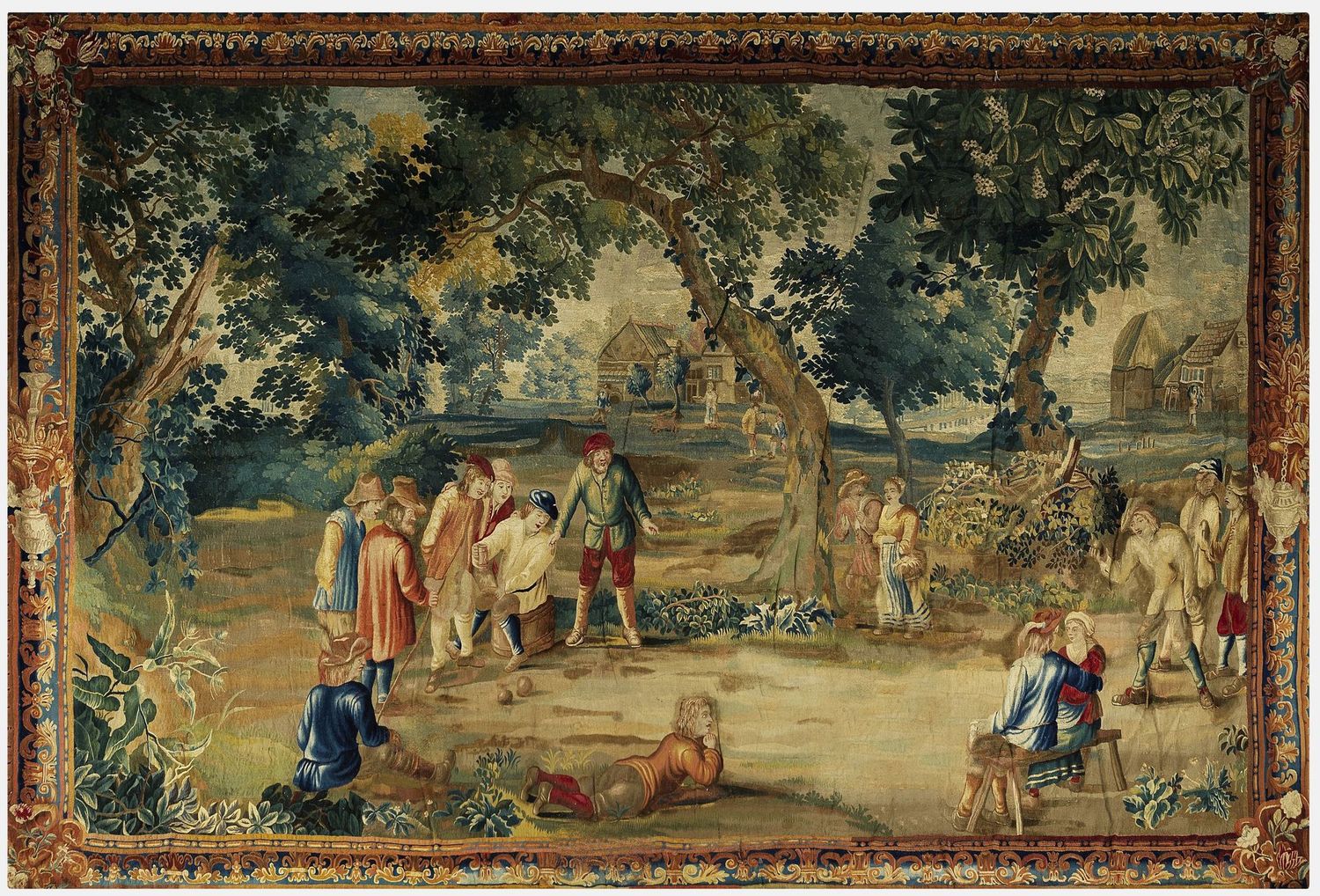Flemish tapestry by Teniers - Circa 17th century - Dim:W420x290H
Flemish tapestry - Lille
Le Jeu de Pétanque
Flemish trapestry by Tenier.
The history of pétanque traces back to ancient Gaul. Initially played with clay, stone, and then wooden balls, the game flourished during the Renaissance, alongside other noble pastimes like bilboquet and jeu de paume (which later evolved into tennis). Oddly, from 1629 to the Revolution, it seems the common folk were forbidden from playing.
By the early 19th century, despite the ban never being entirely enforced, pétanque spread across France from north to south. In 1850, the first official society, "Le Clos Jouve," was founded near Lyon. In 1906, the Lyon and regional federation paved the way for the national federation in 1933, later becoming the French Federation of Pétanque (FFP) in 1942. Although encompassing various ball games, the FFP was dominated by lyonnaise-style pétanque until the early 20th century.
During the 19th century, as each region introduced its variant, southerners favored the long or jeu provençal, with simplified rules and the freedom to choose terrain, allowing players three steps before throwing.
In 1907, jeu provençal gave birth to pétanque during a historic game in La Ciotat. Champion player Jules Hugues, known as "Lenoir," unable to play his favorite game due to arthritis, began drawing circles, tossing the jack 5-6 meters away, and playing with "pieds tanqués" (feet anchored), aiming to get close to the jack. This occurred on the boules ground of a café called "La boule étoilée," owned by Ernest and Joseph Pitiot. The brothers saw the potential of this new sport, with Ernest refining its rules.
It wasn't until the first official competition in La Ciotat in 1910 that the term "pétanque" was solidified. It derives from the Occitan words "pè" meaning "foot" and "tanca" meaning "anchored stake," signifying playing with feet firmly planted, as opposed to jeu provençal, where players could take a running start.
Maxime Jabert - Accredited Expert CNE
Our house ensures the sale of a tapestry with invoice and accredited expertise, well cleaned, in good condition with its fixing system. If necessary, we will specify the work that has been done. All our tapestries can be presented to you at your home in France and neighboring countries before your final decision.
Tapisserie Aubusson Verdure Ancienne Tapis Contemporain Coussin Tapis COLLECTION TAPISSERIE ANCIENNE TAPISSERIE CONTEMPORAINE COUSSIN TAPISSERIE ORIENT TAPIS PERSE TAPIS IRAN Achat Vente tapisserie anciennes à paris. Tapisserie Aubusson Ancienne, Tapisserie Bruxelles, Tapisserie Flandres, Coussin en Tapisserie
Tous droits réservés |
GALERIE JABERT



